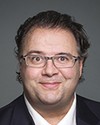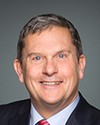Thank you, Mr. Chair.
I would like to thank the witnesses for their interesting testimonies.
We have been listening to the witnesses and colleagues talk about prescriptions, accuracy and education. For newbies like me, it is surprising, even alarming, to learn that doctors prescribe drugs that are not appropriate. I'll put it that way, quite simply. Having to educate patients is one thing. But I'm hearing some people say that individuals who go to the doctor want to receive professional care and prescriptions without too many questions.
In the world we live in, people are becoming more informed. So, they ask more questions. For instance, parents ask many more questions when it comes to their children.
What I have realized from the beginning of our study on antimicrobial resistance is that there are no clear statistics. There is difficulty in establishing the point of contact and determining whether or not there is a crisis. At the global level, there are action plans, but it is not as striking. Ms. Kossey has given us some completely shocking numbers today.
As for the opioid crisis that we are experiencing, we are at the heart of this crisis, we are responding to it now, and we are taking action. However, the problem of antimicrobial resistance is like a silent killer that sneaks up quietly, but may end up striking with a hockey stick.
Dr. Rau, what is the equilibrium curve? What plan of action will allow us to tackle this problem head-on?




